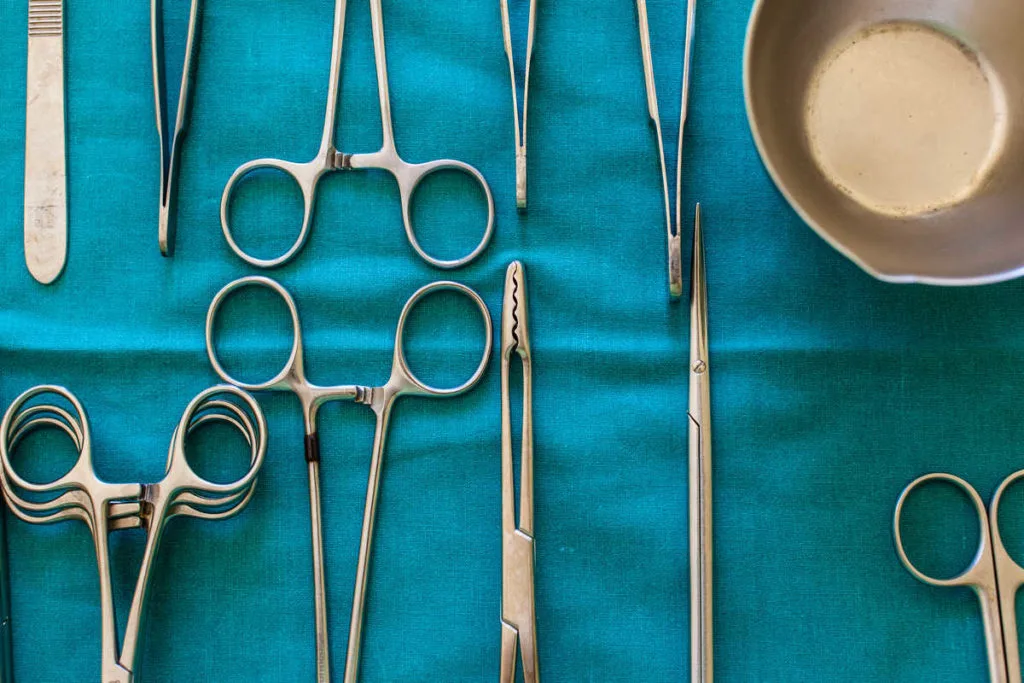
We often hear and speak of spaying or neutering our dogs in general terms, without a clear understanding of what all is involved in the procedure, but should you do it – should you spay or neuter a German Shepherd?
Spaying or neutering a German Shepherd can be useful to prevent hormone-related behavioral issues like aggression and the tendency to wander off. However, the procedure should be performed only after the dog is at least 1 year old to lessen the risk of cancer and joint disorders.
In this article, we will discuss exactly what spaying and neutering consists of, the benefits and potential risks that it poses to a German Shepherd, as well as address alternatives to spaying or neutering.
Click Here to Jump to a Section
Why Do People Get Their Dogs Neutered?
Neutering dogs is strongly recommended by a number of public animal advocacy groups, such as the ASPCA, the Humane Society, rescue groups, and animal shelters. One of the primary reasons that neutering pets is so strongly urged is because of overpopulation.
Neutering prevents dogs from giving birth to unwanted litters which would inevitably end up in the animal rescue system and within that system there is a high probability that they will be euthanized. They simply do not have the space or the funding to house every dog that comes their way.
What Is Spaying and Neutering, and What Do They Do?
We often think of “neutering” as a term that only applies to male dogs, but the truth is that either sex of a dog can be neutered. When referring to neutering a male dog, the specific term is “castration,” and for a female dog the specific terms is “spaying.”
In more general terms, neutering and spaying are referred to as “fixing.”
Spaying
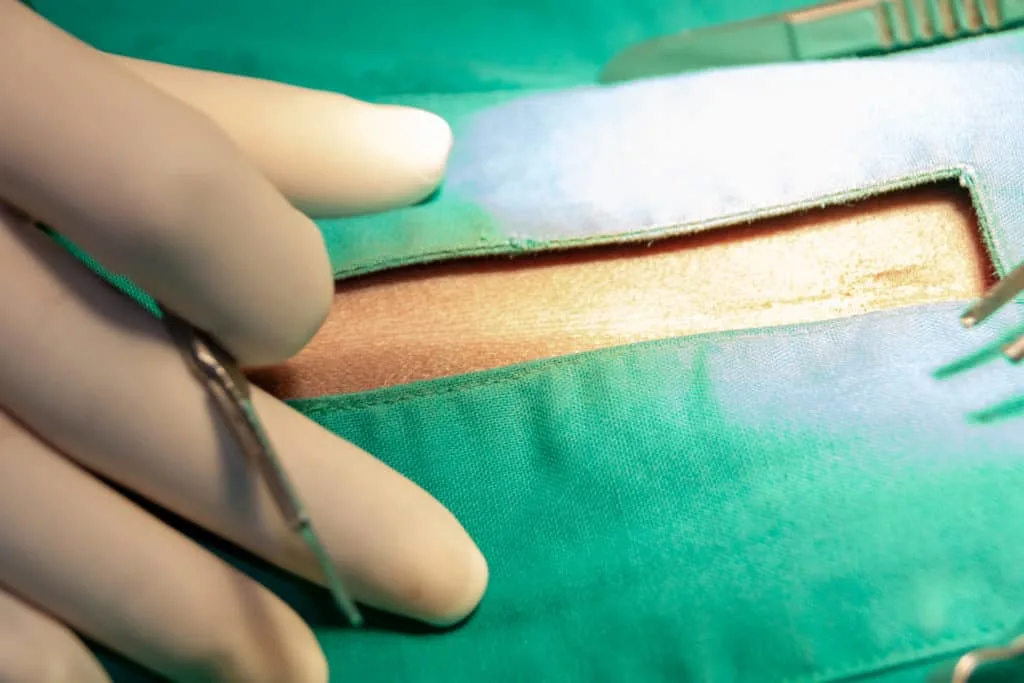
In female dogs, spaying is the process of surgically removing the ovaries and uterus, but sometimes in younger dogs only the ovaries will be removed. A less common method involves surgically removing just one or both ovaries, while leaving the uterus intact.
The surgery is done in one of two ways.
- Open surgery: This is the most common and traditional method of surgery. It involves an incision large enough for the surgeon to visually see what he or she is doing.
During open surgery, the surgeon will cut through ligaments necessary to expose the ovaries and/or uterus. From there, arteries are tied off and the uterus and/or ovaries are removed. The surgeon will then check for bleeding and close the insides up with sutures, and finally, the skin will be closed by either stapling, suturing, or by the use of glue. - Laparoscopic surgery: Also known as “minimally invasive,” or “keyhole” surgery, this method uses a telescopic rod with a lens.
During the laparoscopic surgery, the telescopic rod is inserted into the dog as the surgeon conducts the procedure while looking at a magnified view of his or her actions on a monitor. Carbon dioxide gas is used to inflate the abdomen in order to create a space for the surgeon to work.
From there, a second instrument with graspers on it is inserted into the dog to grasp and remove the ovary. The grasping instrument is then replaced with a cauterizing instrument to seal the incisions, so no sutures are needed. Laparoscopic surgery is less painful than open surgery and the dog’s recovery time is also faster.
For both of these types of surgery, the dog is placed under general anesthesia, so she is completely asleep during the procedure.
Neutering

For male dogs, neutering involves removing the dog’s testicles. This procedure is relatively simple.
First, the dog’s testicles are isolated and the surgeon makes a small incision directly in front of where they are located. The incision that is made is just large enough for a testicle to pass through it.
The testicles are then individually simply pulled through the incision. From here, the blood and sperm supply to the testicles (one at a time) are tied or clamped off to prevent bleeding, and then the testicles are cut off. This process is repeated twice – one time for each testicle.
After this is complete, the bottom and top layers of the dog’s skin are sutured up. The sutures will then dissolve and fall apart within the next several days, and the dog will be well on its way to healing.
Is Neutering a German Shepherd Necessary?
While neutering a GSD is not necessary, it can, amongst other benefits, work to address behavioral issues before they start, as well as lessen the likelihood of certain diseases and disorders. Below we have listed a number of benefits that can be gained from neutering a GSD at the proper age.
Behavioral issues: This applies especially to male dogs. Studies have been shown that when a dog is neutered at a young age, that aggressive behavior is not as prevalent when the dog gets older.
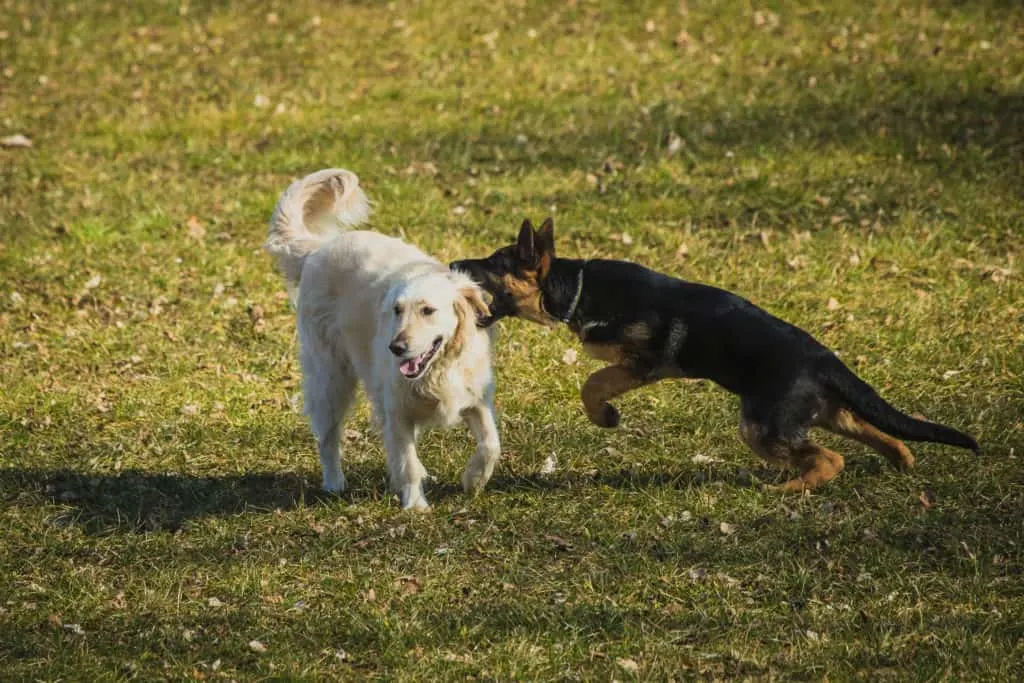
Aggressive behavior here also includes a dog’s infamous “leg humping,” and even the humping of inanimate objects. We’ve all had that uncomfortable moment when our GSD has tried to do this to a guest, so neutering can lessen this behavior.
Genetic diseases: Neutering can also prevent the spread of bad genes. If a dog is born with less than optimal genes, if he then mates and spreads those genes, the result will be more dogs with the same genetic disposition.
This includes conditions like hip dysplasia and cryptorchidism. So be aware that even if your dog is as lovely as can be and is the perfect pet for you, if it has a genetic condition that negatively affects its health, neutering will prevent his genes from being passed on to any offspring.
Testicular cancer: This cancer only occurs in intact dogs (dogs that still have their testicles). Since testicular cancer stems from testosterone, neutering completely eliminates the risk of a dog developing testicular cancer, as there will no longer be any testosterone present to allow the development of it.
Perineal hernias: While a number of different hernias are present in dogs, perineal hernias are seen particularly with dogs that are intact. These hernias occur when organs in a dog’s abdomen slip and herniate through weakened pelvic muscles. The hernias can be filled with fluids, fat, and even a dog’s bladder.
While perineal hernias can be resolved through surgery, the more efficient course of action is prevention, which can be accomplished through neutering instead of waiting for a hernia to develop.
Unwanted pregnancies: When a male dog is intact, it is virtually impossible for them to resist a female dog that is in heat. And an intact male dog can smell a female in heat from a great distance away – much farther than you may expect.
I have personally witnessed a woman trying to ward off eager male dogs trying to mate with a female in heat by throwing buckets of water at them, and it did little to nothing. The male dogs were persistent, and the woman and the female dog both frustrated and frightened. This was a serious situation, and it was actually quite traumatic for the woman and the female dog.
Injuries and accidents: When a male dog is intact, as mentioned above, he will be on the scent and lookout for females to mate with. This often leads to issues with male dogs escaping from enclosures or just wandering away when they otherwise would not.
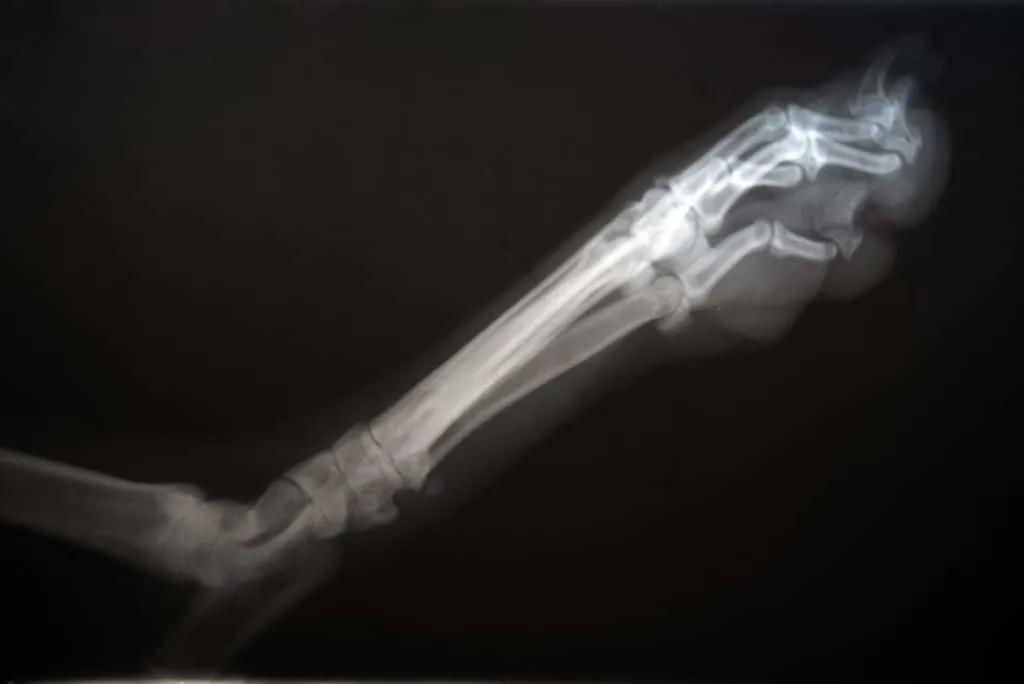
While they are out scouting for females in heat, all too often male dogs will get hit by cars or cross paths with another intact male on the hunt for females as well. This can lead to fights that result in serious injury or if hit by a car, it can be fatal for the dog.
Wandering off/getting lost: When an intact male is on the search for a female in heat, he has only one thing on his mind and tunnel vision towards his end goal. So he is not thinking about where he is or where he may have come from. Contrary to popular belief, dogs do not just “find their way home,” and often times they just get lost.
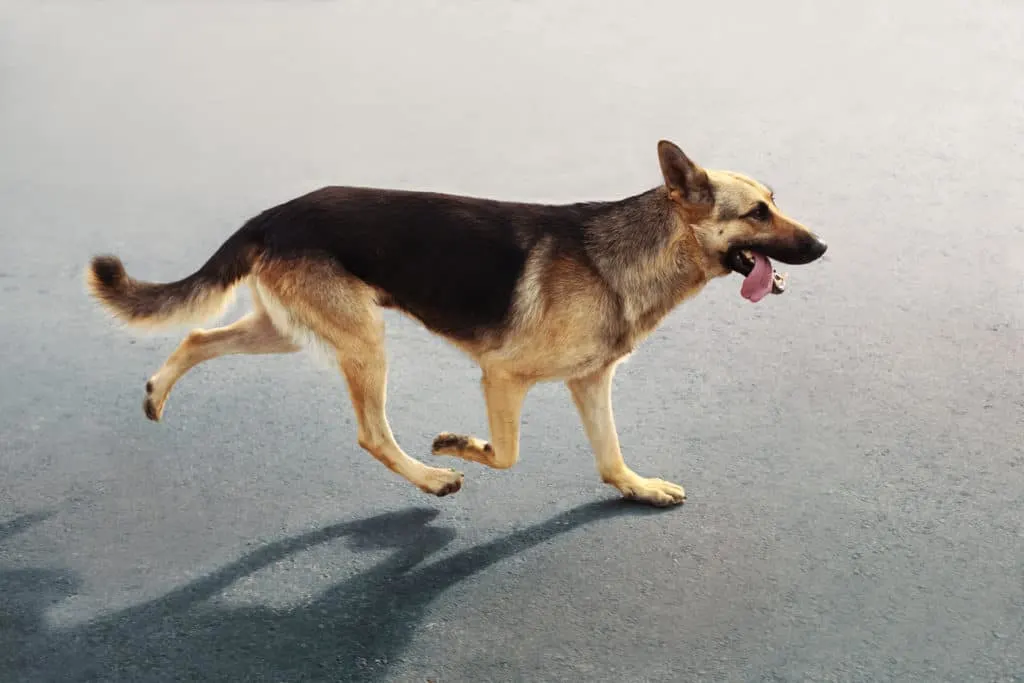
Many dogs are also not microchipped, and this makes finding them all the more difficult.
Decrease dog overpopulation: This factor cannot be mentioned enough. Too many shelters are beyond their capacity in terms of the space and funding that they have available to shelter incoming dogs. And while there are a number of “no-kill” shelters, this does not mean that they can accept every dog that comes their way.
Sadly, the dogs that many no-kill shelters have to turn away end up going to standard shelters and ultimately end up being euthanized. If you take a step toward decreasing overpopulation, you give other dogs a higher chance of being accepted to a shelter and then adopted out to a good home.
Cut down on instances of “marking”: For those of you who have experienced the smell of a dog marking, you know that it is a very unpleasant smell that stays with you for some time – it’s hard to forget. If a dog is neutered at a young age, this cuts down on his desire to mark his territory, and will result in less distasteful smells for you to have to endure.
Prostate disease: Just like humans, dogs can also develop prostate disease. A dog that is not neutered will sometimes develop abscesses, cysts, or general enlargement of their prostate. If a dog is neutered, prostate disease will be altogether prevented from ever happening.
Is Spaying or Neutering Painful for a Dog?
A dog will not feel any pain during the surgery to get him or her neutered or spayed. This is because the veterinarian will administer an anesthetic that will cause the dog to go to sleep throughout the entire procedure. After the procedure, the veterinarian will administer an injection that will prevent the dog from feeling any pain for at least 8 but up to 12 hours.
It is also common for a veterinarian to provide specific medication for any lingering pain for the next several days after surgery. Always remember to give your dog only the veterinarian prescribed medication for pain, as human pain medications can sometimes be poisonous to a dog.
Can Spaying or Neutering Harm My German Shepherd?
While there are many benefits to neutering your German Shepherd, it is also very important to acknowledge and understand the risks involved with having your GSD undergo this procedure. The risks associated with spaying or neutering your GSD are primarily centered around the age at which the dog is spayed or neutered.
In a recent study conducted at the University of California, Davis resulted in the finding that when a German Shepherd is spayed or neutered before one year of age, that the risk of the dog developing joint disorders triples.
The pool of dogs analyzed consisted of 1,170 German Shepherds that were either neutered, spayed, or intact. The study took place of 14.5 years, and was intended to search for joint disorders that had been previously associated with spaying and neutering.
The finding was that 7% of intact male GSDs were diagnosed with at least one joint disorder, while males neutered before the age of 1 had a joint disorder rate of 21%. The corresponding number for intact females was 5% versus 16%. This is a tremendous disparity and should be viewed as very statistically significant.
Dr. Benjamin Hart, the lead researcher at UC Davis School of Veterinary Medicine, stated:
“Debilitating joint disorders…can shorten a dog’s useful working life and impact its role as a family member. Simply delaying the spay/neuter until the dog is a year old can markedly reduce the chance of a joint disorder.”
Dr. Benjamin Hart, lead researcher, UC Davis School of Veterinary Medicine
In accordance with the most recent research, it is highly recommended that you do not have your GSD undergo spaying or neutering procedure until he or she is at least 1 year old. If the procedure is performed at too young of an age for the dog, the long-term negative effects can be debilitating to your GSD and impact its ability to function as both working and family dog.
Testicular implants
Enter “Neuticles.” You may find the idea just as peculiar as the name – Neuticles are testicular implants for your dog. They were created to address concerns over a dog’s emotional health after a neutering procedure.
While it can be argued that implanting Neuticals into a post-neutered dog is more for the emotional well-being of the owner to lessen any feelings of guilt that they may have after having their dog’s most masculine feature removed, the fact is that these implants are becoming more and more common.
Neuticles aren’t cheap, they can cost close to $500 for a set for your dog. They were originally constructed of hard plastic, but the material was switched to silicone after owners complained of “clunking” noises emanating from you know where.
According to Gregg Miller, the inventor of Neuticles:
“Neuticles are encouraging those pet owners to neuter that simply would not before. As a result pet overpopulation is being reduced and those Neuticled pets are living longer, happier and healthier lives. Neuticles should be praised and encouraged as it promotes neutering- its helping to reduce pet overpopulation and above all its safe and humane,”
Gregg Miller, Neuticles inventor
Whether you find this to be a viable option for you and your dog, or whether you consider the idea to be completely absurd, Neuticles remain an option to cosmetically restore a male dog to his original glory.
How Much Does It Cost to Neuter a German Shepherd?
Depending on where the procedure is performed, the cost of neutering a German Shepherd can range anywhere between $35 – $300. The cost of neutering your dog will also depend on a number of different factors. These include:
- Where you live
- The age of your dog
- The breed of your dog
- The health of your dog
- Whether your dog is obese
- The complexity of the surgery
- Whether your dog has diabetes
- Whether pain medication is included
- Where the procedure is performed (at veterinarian vs. at a shelter)
- If pre-anesthetic blood work is performed to check liver/kidney function
Generally speaking, the cost of neutering your GSD will cost more if the procedure is performed at your veterinarian’s office. However, you do have a number of other low-cost options available to you. You can contact your local shelter, Humane Society, or ASPCA for lower-cost options.
How Much Does It Cost to Spay a German Shepherd?
Generally speaking, the cost of spaying a dog will cost between $50-$150 at a Humane Society, shelter, or low-cost clinic. If the procedure is being performed by a private veterinarian, the cost will increase and you can expect to pay in the range of $200-$350.
Spaying is a more complex procedure than neutering. It involves either open or laparoscopic surgery, and requires more precision and takes longer to perform than neutering. Similar to neutering, the cost of spaying will depend on a number of factors including:
- Where you live
- The age of your dog
- The breed of your dog
- The health of your dog
- Whether your dog is obese
- Whether your dog is in heat
- The complexity of the surgery
- Whether your dog is pregnant
- Whether your dog has diabetes
- Whether pain medication is included
- Where the procedure is performed (at veterinarian vs. at a shelter)
- If pre-anesthetic blood work is performed to check liver/kidney function
Anesthesia During Neutering and Spaying
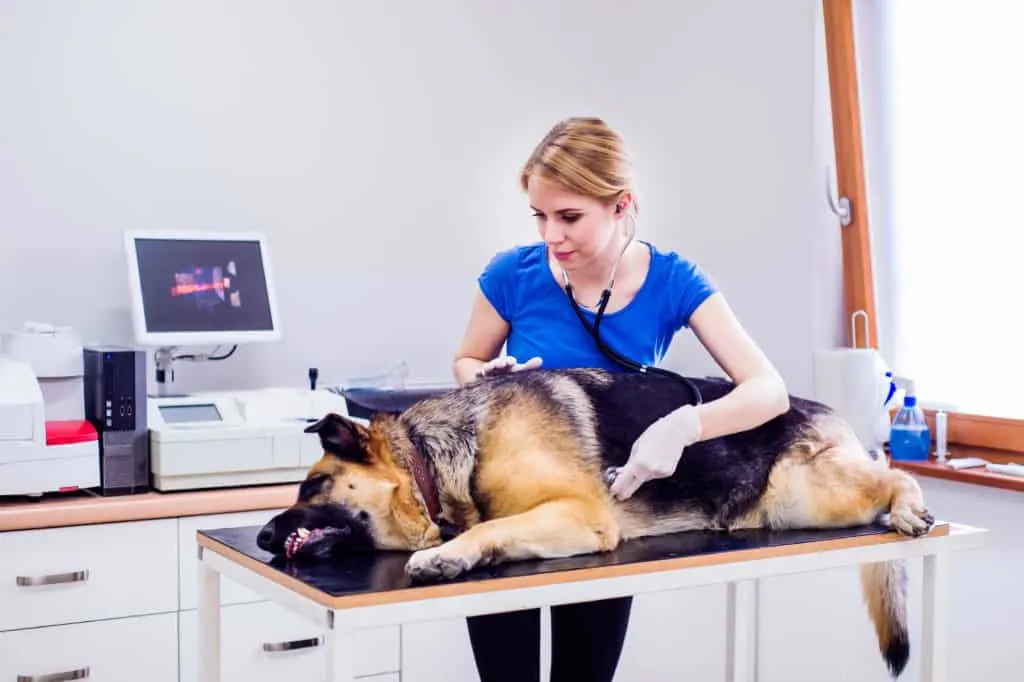
During a spaying or neutering procedure, your GSD should be placed under general anesthesia – meaning that your dog will be asleep because of heavy sedation. Anesthesia is a serious measure in itself, and if it is performed improperly, it can be fatal to your dog. Each year, approximately 1 in 1,000 dogs that go under general anesthesia die.
Unfortunately, not all practitioners take the proper precautions and follow correct procedures while administering anesthesia to a dog which can result in their death. Each year, approximately 1 in 1,000 dogs that go under general anesthesia die.
To make sure that your whoever is performing the procedure on our dog is doing it properly, and to give yourself peace of mind, you should discuss the procedure with the person performing it and make sure that you have clear answers to the following questions:
- What are the most common complications that do occur during this procedure for my dog breed specifically?
The team member should be able to give you specific examples of complications that have occurred in the past and how the veterinary team has handled and is prepared to handle them.
- Does my dog have any specific conditions that may increase the risk of complications during anesthesia? And if there are, what are they, and how do you plan to minimize risks to my dog and how will you address any complications should they occur?
You should feel comfortable that the veterinary team member answering this question is able to demonstrate a great deal of knowledge about your questions. This means that they should be very familiar with your dog’s history and any health issue that he or she may have had in the past that could factor into anesthesia.
- Can you describe the process of anesthesia that my dog will be undergoing?
You will want to make sure that anesthetic will be introduced through an intravenous tube and not a mask. Also, be sure that other intravenous fluids and drugs will be on hand in case of complications.
- Will there be a properly credentialed technician monitoring my dog while he or she is under anesthesia, and how much experience do they have?
You will want to make sure that either a Registered Veterinary Technician or a (RVT) Certified Veterinary Technician (CVT) will be monitoring your dog’s anesthesia during the procedure all the way through, including recovery, one of the most crucial parts of anesthesia, as the majority of deaths occur during the recovery period.
- Which of my dog’s physiological functions will be monitored while he or she is under anesthesia?
Due to the number of complications that can arise for a dog while under anesthesia, it’s very important that the following functions are closely monitored by an anesthetist who knows how to deal with them should they arise:
– Eye position
– Respiratory rate
– Blood pressure
– Temperature
– Oxygen saturation
- Will my dog’s anesthetist’s responsibility be solely to administer and monitor my dog while he or she is under anesthesia, or will they be performing other tasks as well?
If the person monitoring your dog’s anesthesia is also tasked with performing other duties, this can be distracting, and it is not acceptable. Administering and monitoring anesthesia is too delicate a process for the person performing it to not be focused solely on it.
- What steps do I need to take to make sure that my dog is able to recover properly and with minimal stress?
Talk to the veterinary team member about what you can do in terms of your dog’s comfort while traveling home from the clinic with your dog, as well as whether you should change his or her diet for a period of time as your dog is recovering.
When discussing all of the above-listed questions with your veterinarian or veterinarian team member, you should feel comfortable and confident with each and every answer that they provide to you. While spaying and neutering are not highly complicated procedures in themselves, improperly administered and monitored anesthesia can kill your dog.
So don’t take any chances, and do not move forward unless you are comfortable. 1 in 1,000 dog deaths from anesthesia may not be a very high number in thought, but that will all change if it is your dog that occupies the “1” in this statistic.
Alternatives to Neutering or Spaying
If after reading the above pros and cons related to neutering or spaying your German Shepherd you feel that it is a procedure that you would rather not have your dog subjected to, you do have other options.
Responsible Pet Ownership

While this may sound straightforward, and we of course all like to think that we are responsible pet owners, in order to avoid spaying or neutering your dog you will need to be willing to exercise extra precautions.
Specifically, if you own a female dog, you will need to be acutely aware of when she is in heat. This will happen for a few days once or twice per year, and during this time you will need to ensure that she is kept in a confined area and unable to gain access to any intact males. Keep in mind that a female in heat will roam, so it’s not only the dog next door that you will need to worry about, females will search far and wide during these times.
If you own a male dog, then making sure that he is unable to roam about freely is just as important, if not more so. Intact males tend to be very bold and throw caution to the wind when they sense a female in heat. They will take risks like crossing trafficked lanes and fighting with other dogs without giving a second thought.
Sterilization
Sterilization is a procedure that prevents unwanted pregnancies in dogs, while at the same time preserving a dog’s testicles or ovaries. Preserving a dog’s testicles or ovaries allows a dog to continue producing hormones that are essential to a dog’s health.
The procedure to sterilize a male dog is a vasectomy, which is rather simple and straight forward just like in humans. For females, the procedure is called a “modified spay.”
A modified spay removes the female dog’s uterus, but it leaves her ovaries, which allows for the continued production of hormones that are essential to her health. It is less invasive than a traditional spay, it requires less time under anesthesia, and it has no side effects. Overall, it is a safer and equally effective procedure than a spay.
When Will My German Shepherd Calm Down After Neutering?
Generally speaking, as long as a German Shepherd has no preexisting behavioral issues, his behavior will slowly calm down over the course of a few months after being neutered. However, in some dogs, this process can take several years to have a noticeable effect.
Testosterone in the bloodstream of a German Shepherd is strongly connected to how aggressive the dog may be. Every dog has an “aggression threshold,” and this comes into play with German Shepherds more so than many other breeds because of their large size and destructive capability.
While it cannot be precisely measured, a dog’s aggression threshold is that tipping point where a dog will no longer stand down and then aggressively engage with other people or animals, especially other dogs. A dog’s aggression threshold also influences the length of time that a dog takes to calm down after its aggression levels have been raised.
Neutering will work to calm a German Shepherd’s aggressive tendencies by significantly reducing the dog’s testosterone levels. While the reduction in testosterone often reduces a dog’s aggressive tendencies, it may also have the effect of reducing a dog’s confidence, which may then turn into another behavioral issue altogether.
It is also important to consider that a dog that undergoes neutering losing its aggressive tendencies is not a “for sure” thing. There are no guarantees that a dog will change any behavioral problems that have become ingrained in it because of irresponsible or poor training. How much neutering works to calm a German Shepherd depends largely on an individual dog’s history, personality, and physiology.
Can Neutering or Spaying a German Shepherd Be Reversed?
Unfortunately, once a dog is spayed or neutered, the process cannot be reversed. This is because when a dog is sterilized, either complete castration (removal of both testicles) or in the case of a female, an ovariohysterectomy is performed, which removes the ovaries and uterus, or some variation of this.
Both of these procedures remove a dog’s gonads (genital tracts), which produce ovaries, sperm, and hormones. Once these are removed they cannot be restored by any method. This differs from human sterilization which is reversible due to the gonads being left in the body.
Once a spay or neuter procedure is completed, a dog will no longer be able to be bred and produce any offspring.
Final Thoughts
As discussed in this article, there can be many tangible and intangible benefits associated with spaying or neutering your German Shepherd. However, it is very important that before you make the decision to go ahead with the procedure, that you have thorough understanding of the risks involved as well as the age parameters that should be adhered to.
Neutering and spaying are irreversible, so make sure that you understand all that is involved. Speak with your veterinarian for however long it takes for you to know that you really have all of the information necessary to make an informed decision.
